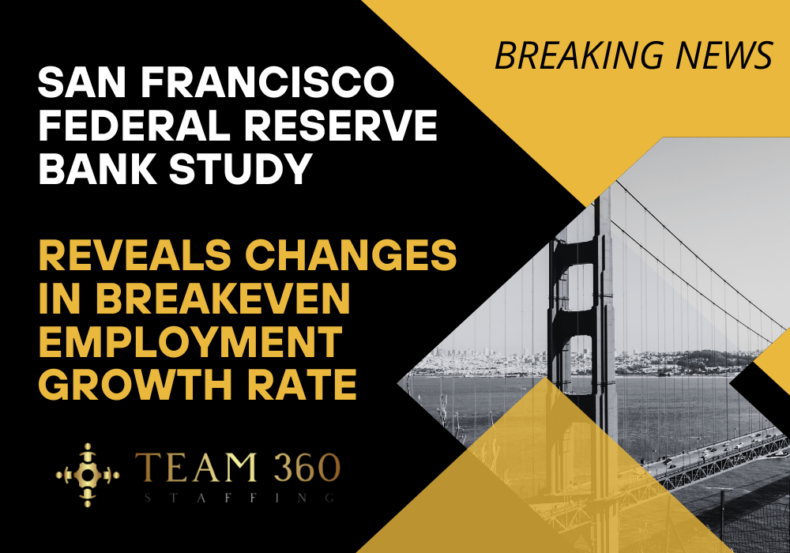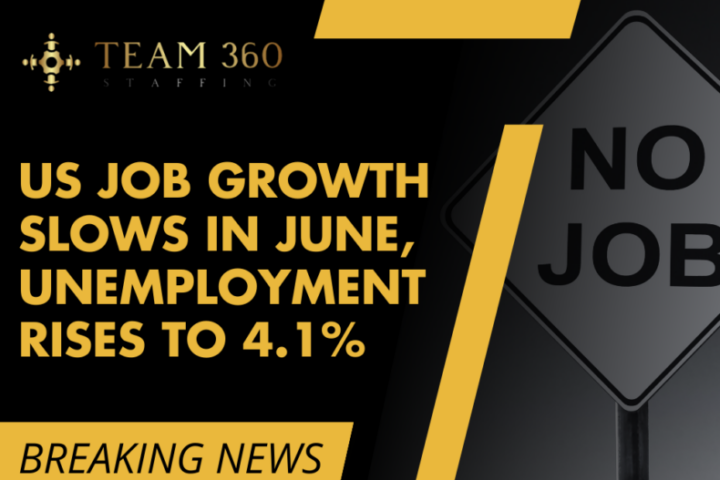Pivotal shifts took place in the US labor market after the pandemic. Such changes led economists to reevaluate the breakeven employment growth rate, which indicates how many new monthly jobs are necessary to keep unemployment at its current level. The San Francisco Federal Reserve Bank's recent studies provide insights into how this rate has changed and its economic implications.
What Is Breakeven Employment Growth?
Breakeven employment growth depends on labor force expansion. Prepandemic estimates suggested that it took between 70,000 and 100,000 monthly job additions to maintain a stable unemployment rate. Yet recent figures indicate that job additions have consistently surpassed these numbers without significantly reducing unemployment.
For example, from early 2022 to May 2024, each month saw an average of around 242,000 new jobs in the US. Regardless of this growth, unemployment remained close to its usual rate of around 3.8%. The increased job number without a corresponding decrease in unemployment led to questions about whether the breakeven employment growth rate has increased.
Influences On Short and Long-Term Breakeven Rates
Breakeven employment growth rates can be divided into short-term and long-term rates. Lasting labor force trends guide long-term rates, while short-term ones focus more on immediate economic shifts.
Main Influences:
- Immigration: Increased immigration has expanded the labor force, altering the short-term breakeven rate.
- Labor Force Participation: A rise or fall in labor force participation can affect the number of jobs needed to stabilize unemployment.
Current Breakeven Employment Growth Estimates
The San Francisco Federal Reserve reports that the short-term breakeven job growth rate has risen dramatically to about 230,000 monthly jobs due to recent increases in immigration and labor force participation. However, this high figure is expected to decrease as immigration rates stabilize and labor force growth returns to normal.
Meanwhile, the long-term breakeven employment growth rate remains steady at around 70,000 to 90,000 monthly jobs. This consistency stems from steady, if slower, workforce expansion.
Estimates for Labor Force Growth
Predictions for labor force growth differ depending on varying circumstances. The baseline scenario uses US Census population predictions and puts long-term job creation at about 72,000 new jobs per month. More ambitious scenarios consider increased immigration estimates up to between 90,000 and 95,000.
Estimates indicate a labor force expansion of around 145,000 new jobs each month in the immediate future. This number might vary with changes in immigration numbers. For example, projections from the Congressional Budget Office under a scenario of increased immigration foresee up to as many as 240,000 new jobs per month.
Consequences for the US Economy
A higher short-term breakeven employment growth rate explains why unemployment has stayed at its current level, even with significant job sector expansion. With the expected stabilization in immigration rates, this short-run rate will likely converge with its long-term counterpart, potentially by late 2025 or later.
Critique of the Fed's Research
Some economists have questioned the San Francisco Fed study, contending that it doesn't sufficiently differentiate between jobs and employment. Unemployment figures are calculated using data about people actively looking for work, not the number of jobs created. So, the link between job creation and unemployment is more intricate than the study represents.
Prominent Criticisms:
- Jobs versus Employment: Critics stress that job increases don't automatically result in increased employment.
- Unemployment Rate: The study's belief that job creation can keep unemployment stable is seen as flawed.
- Economic Premises: Critics believe the research doesn't consider possible economic downturns or recessions.
Final Thoughts
The US labor market is undergoing significant modifications after the pandemic, considerably affecting breakeven employment growth rates. While short-term rates have skyrocketed because of rising immigration and labor force participation, long-term rates remain relatively steady. Understanding these forces is essential for policymakers and economists as they guide the future of our labor market and aim to keep our economy on track.
The ongoing adjustment of our economy to these recent changes calls for continuous analysis and updates.



